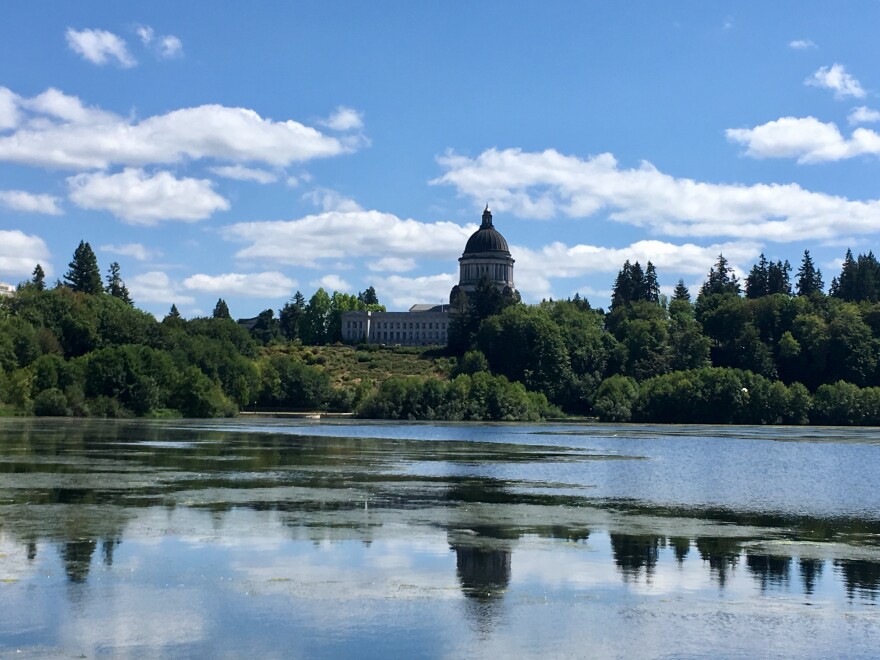The City of Olympia, and now the state, have officially recommended that Capitol Lake revert to an estuary. The state says a return to tidal mudflats is the only way to meet state water quality standards.
The recommendation to take down the dam and let the tides return is in the final Environmental Impact Statement, released on Monday.
When the Deschutes River was dammed in 1951, the idea was to create an ornamental reflecting pond. And for the first few decades, Capitol Lake served that purpose pretty well, said Ben Watson with the Washington State Department of Ecology.
"But over time, sediment collected and made the lake shallower. Nutrients collected and started to create more and more frequent algal blooms. Bacterial pollution increased," Watson told KNKX.
Now the shallow lake works like a petri dish in summer, filling up with bacteria and freshwater plants that wash over the dam into the brackish water of Budd Inlet, where they decompose and drive oxygen levels down. Budd Inlet is part of Puget Sound. The state is required to clean it up.
The Department of Ecology's modeling indicates that the only way to bring it into compliance is by restoring the Deschutes River estuary through the removal of Capitol Lake Dam.
Carrie Martin is a planner with the Department of Enterprise Services, which is managing the process.
“The restored estuary is the only alternative that can achieve state water quality standards," said Martin, during an online briefing.
"And under the estuary alternative, we can look forward to enhanced community use, boardwalks, a dock and a boat launch would be constructed. People will still be able to walk around the water body. The loop around the north basin will be improved.”
The state began studying management alternatives several years ago. Maintaining the lake through regular dredging and doing nothing were among the options.
It’s expected to take at least a decade to remove the dam and restore the estuary, once the project gets funding.







